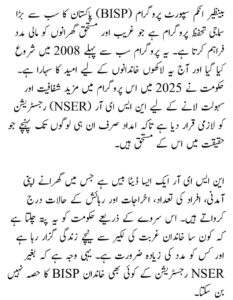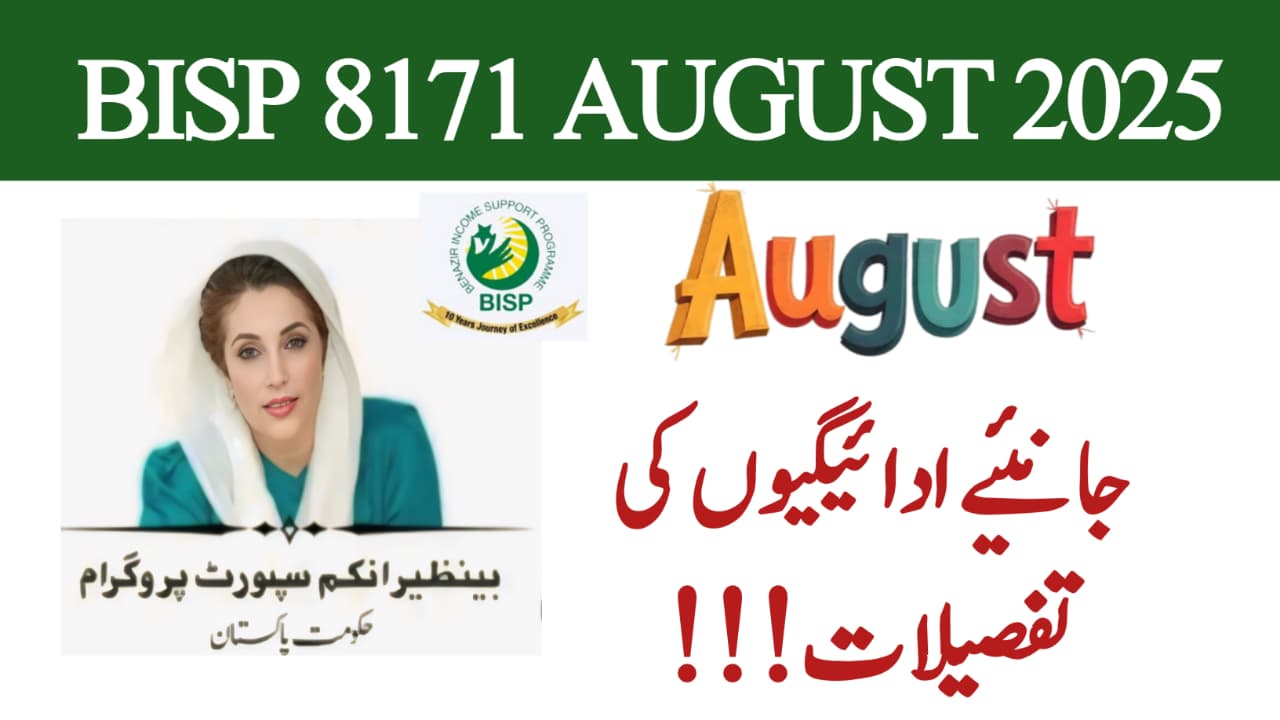The Benazir Income Support Program (BISP) is still one of the most important and well-known social safety programs in Pakistan.. Designed to provide direct financial support to low-income families, the program plays a critical role in reducing poverty and ensuring that vulnerable households can meet their basic needs. As of August 2025, the government has released updated information on payment schedules, methods, and eligibility requirements. This guide provides a detailed breakdown so beneficiaries can easily understand how to receive their payments without delays.
Overview of BISP
Launched in 2008, BISP aims to empower underprivileged families—particularly women—through unconditional cash transfers. Over time, the program has evolved, introducing more transparent systems, biometric verification, and multiple payment methods. Today, millions of households across Pakistan benefit from BISP assistance.
The program also runs complementary initiatives such as
- Taleemi Wazaif —education stipends for children to reduce dropout rates.
- Kafalat—Regular financial support for women from low-income households.
- Special Support Programs – Additional assistance for marginalized communities and disaster-affected areas.
August 2025 Payment Schedule
For the current quarter, BISP has confirmed that installments are being disbursed on time through a phased distribution process. This approach ensures smooth operations and prevents overcrowding at payment points.
Beneficiaries in different regions will receive:
- Quarterly stipend: PKR 9,000 for eligible households.
- There are also benefits for disabled people, pregnant women, and kids who are in school.
- Payments that were backlogged due to verification issues in previous cycles will be processed.
Payment Methods in 2025
The payment system has been upgraded to make it more transparent, secure, and accessible. Beneficiaries can now receive their funds through several channels:
- Bank Account Transfers—Where available, payments are transferred directly to beneficiaries’ bank accounts for easy withdrawals.
- ATM Withdrawals—Partner bank ATMs allow recipients to withdraw cash using their CNIC after biometric verification.
- Cash Distribution Centers – For rural and remote areas, payments are made at designated camps or centers with the help of authorized agents.
- Mobile Wallets—In selected districts, mobile banking and wallet-based payments are being tested to increase convenience.

Biometric Verification
A crucial step for receiving BISP payments is biometric verification via NADRA. This system ensures that only the eligible person receives the payment.
If the biometric scan fails:
- The beneficiary must visit a NADRA service center to update their record.
- Special arrangements are made for elderly citizens and people with disabilities to verify through alternate means.
Reasons for Payment Delays
While BISP has streamlined its processes, delays can still occur. Common reasons include:
- Outdated CNIC or personal information
- Bank account inactivity or closure
- Unverified family data in NADRA records
- Biometric mismatches
- Change in Poverty Measurement Test (PMT) score, requiring re-verification
The program advises beneficiaries to keep all personal records updated to avoid interruptions.
Special Measures in August 2025
To improve the efficiency and reach of payments, several new measures have been introduced:
- Mobile Payment Vans—Deployed to remote and hilly areas where access to banks or camps is limited.
- Helpline Upgrade—The BISP complaint system now offers faster resolution through dedicated support teams.
- We are using SMS alerts, community announcements, and local radio programs in our awareness campaigns to inform beneficiaries about their payment schedules.
How to Check Your Payment Status
Beneficiaries can confirm whether their payment has been issued using the following methods:
- SMS to 8171 —send your CNIC number (without spaces or dashes) to the official helpline.
- BISP Website – Use the online tracking tool to check payment details.
- Partner Bank Helplines – Call the official partner bank assigned to your district.
- Visit the local BISP Office in person for manual verification.
Beneficiary Guidelines for Safe Collection
To ensure secure payment collection:
- Always collect payments from authorized banks or distribution centers.
- Do not pay any agent or middleman; BISP payments are free.
- Keep your CNIC safe and never share personal details with strangers.
- Please promptly report any fraud attempts to the BISP helpline.
Impact of the Payments
BISP’s quarterly stipends have a direct positive impact on low-income households. Families use these funds to:
- Purchase food and household essentials
- Pay for children’s education
- Cover basic medical expenses
- Reduce reliance on high-interest informal loans
For many families, this assistance is the difference between meeting basic needs and falling deeper into poverty.
Conclusion
The August 2025 BISP disbursement update reflects the government’s ongoing commitment to providing timely financial support to vulnerable citizens. By expanding payment methods, improving verification systems, and introducing outreach services in remote areas, the program is becoming more accessible and reliable. Beneficiaries are encouraged to remain alert to official updates, keep their records current, and use only authorized channels for payment collection. With continued improvements, BISP remains a cornerstone of Pakistan’s poverty reduction strategy.
For More Information Click Here

fqaneu